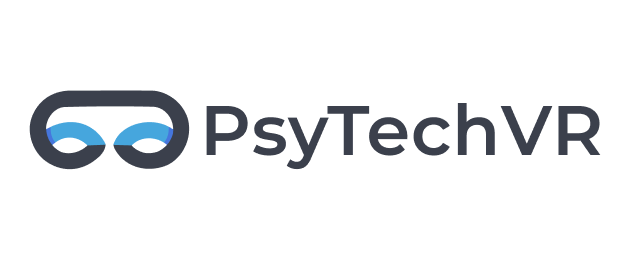Blog - Therapy
VR Hypnosis: The Future of Hypnotherapy in Virtual Reality
By Inna Maltzeva, Clinical Research Specialist
March 15, 2025
The alliance between therapeutic practices and immersive technology have created several new and interesting developments in mental health treatment. Virtual Reality hypnosis is one such development – an alliance of traditional hypnotherapy and the modern digital environment. As the digital age progresses, such an approach is sure to challenge the current understanding of many topics, including both therapeutic intervention and consciousness manipulation.
The ability to create controlled virtual spaces where the mind can explore its own depths helps VR hypnosis provide unconventional opportunities for psychological transformation. It is not just a technological upgrade, either, but a dramatic shift in the overall approach to conscious state altering. Traditional hypnotherapy relied a lot on a combination of imagination and verbal guidance, but the addition of VR into the mix helps leverage complex visual and auditory stimuli in order to achieve deeper states of therapeutic trance, improving the end result.
Such a drastic evolution is an obvious departure from most conventional hypnotherapy methods that theoretically offer better therapeutic outcomes while improving engagement across the board. In this article we try to look into the topic of hypnotherapy in VR and analyze how it can change the industry forever.
The ability to create controlled virtual spaces where the mind can explore its own depths helps VR hypnosis provide unconventional opportunities for psychological transformation. It is not just a technological upgrade, either, but a dramatic shift in the overall approach to conscious state altering. Traditional hypnotherapy relied a lot on a combination of imagination and verbal guidance, but the addition of VR into the mix helps leverage complex visual and auditory stimuli in order to achieve deeper states of therapeutic trance, improving the end result.
Such a drastic evolution is an obvious departure from most conventional hypnotherapy methods that theoretically offer better therapeutic outcomes while improving engagement across the board. In this article we try to look into the topic of hypnotherapy in VR and analyze how it can change the industry forever.
How Virtual Reality Might Augment Hypnosis Therapy
The integration of virtual reality into hypnotherapy helps create immersive VR environments capable of bypassing common resistances to traditional hypnosis induction. Such a modern approach engages several sensory channels at once in order to enhance the hypnotic experience that were previously only possible in theory.
VR exposure therapy is capable of creating custom-tailored environmental triggers, rapidly inducing trance states while enhancing the therapist-client connection using the shared virtual reality experience. The aforementioned ability to generate personalized safe environments is another fundamental advantage of this approach – but the exact specifics of each advantage are going to be discussed later in the article.
VR exposure therapy is capable of creating custom-tailored environmental triggers, rapidly inducing trance states while enhancing the therapist-client connection using the shared virtual reality experience. The aforementioned ability to generate personalized safe environments is another fundamental advantage of this approach – but the exact specifics of each advantage are going to be discussed later in the article.
Understanding the Concept of VR Hypnosis: Interactions with the Subconscious
The subconscious mind tends to respond differently to virtual environments than traditional verbal suggestions. VR hypnosis makes it possible to present a custom-fit reality to a patient’s brain in order to “speak” directly to its pattern-recognition capabilities. Such digital environments act as bridges between subconscious processing and conscious awareness in order to create unique opportunities for therapeutic intervention.
The mind tends to naturally accept the presented reality as valid if it is immersed in a virtual space well enough – even if it is aware of its artificial nature. Such a paradoxical state is called conscious immersion, it allows for deeper engagement with therapeutic suggestions without losing the sense of safety and control over the environment.
How Does VR Hypnosis Work? The Role of Virtual Environments in Inducing Hypnotic States
Virtual reality environments can act as so-called catalysts for hypnotic induction – creating what professionals refer to as environmental coherence. Such a state occurs when the therapeutic objectives and the virtual space are aligned perfectly, offering consistent and meaningful stimuli in order to guide the mind toward the desired state of consciousness.
Such a process relies on three key components to operate properly:
Such a process relies on three key components to operate properly:
- Cognitive absorption – attention engagement using meaningful interactions with the patient.
- Sensory synchronization – proper alignment of auditory, visual, and maybe even haptic feedback.
- Progressive immersion – the usage of environmental cues to gradually deepen the hypnotic state.
Use of Positive Language and Self-Calming in VR Hypnosis

Language can be used on a completely new level in terms of effectiveness when operating within virtual environments. The ability to create multi-sensory affirmations using visual elements and regular words or phrases tends to resonate deeper for most patients than traditional verbal cues. Virtual spaces can become canvases for positive self-talk, and affirming messages can even manifest as tangible elements in the virtual environment itself.
AI in VR therapy: safe place / manifestation
MindGap AI is a powerful VR system allowing you to create personalized experiences tailored to your needs. With this tool, you can establish a VR space to help you manage stress and anxiety and achieve a sense of calm and relaxation. Innovative tool that empowers you to take control of your thoughts and emotions with just one click.
VR-based approaches can transform abstract concepts into real-life experiences, making it possible for clients to, quite literally, witness the physical manifestation of their calming thoughts or walk through their positive affirmations. The capability to create a synergy between visual and verbal elements forms a great framework for drastic psychological changes, leading to the therapeutic messages being reinforced using multiple perception channels.
Differences Between Traditional Hypnosis and VR Hypnosis
The usage of VR-enhanced sessions instead of traditional hypnotherapy is a drastic evolution in therapeutic practice. VR hypnosis can create a tangible dreamscape of sorts where therapeutic interventions can unfold, while conventional hypnosis relies primarily on the power of voice and imagination. Such a fundamental shift has the potential to improve the power of hypnotic suggestions in terms of both reception and delivery.
Traditional hypnosis methods have been encountering the issue of limited individual visualization capacity for quite some time now, with certain clients struggling to maintain mental images or achieve deep focus. VR technology can bridge this gap through a consistent experiential foundation that can remain stable regardless of the imaginative capabilities of each client.
Traditional hypnosis methods have been encountering the issue of limited individual visualization capacity for quite some time now, with certain clients struggling to maintain mental images or achieve deep focus. VR technology can bridge this gap through a consistent experiential foundation that can remain stable regardless of the imaginative capabilities of each client.
How VR Enhances Traditional Hypnotherapy Through Hypnosis-Aided Exposure Therapy
A hybrid approach of VR hypnotherapy makes it possible for each client to encounter their own versions of challenging situations while still maintaining a mindset that can be considered therapeutically receptive – capable of being affected by hypnosis methodologies. The degree of control that virtual environments provide helps keep the exposure intensity on a very tight leash, forming a gradual path toward healing that would be drastically more challenging to form using only traditional hypnosis.
For example, if the VR hypnosis is used to treat heights-related anxieties, the virtual environment can simulate various elevations without breaking the client’s balanced state of awareness, making it possible to perform small-scale adjustments for improved effect at any point in time according to client response. Such granularity in hypnotherapy for heights and in many other situations is practically unachievable in traditional hypnosis and any of its forms.
For example, if the VR hypnosis is used to treat heights-related anxieties, the virtual environment can simulate various elevations without breaking the client’s balanced state of awareness, making it possible to perform small-scale adjustments for improved effect at any point in time according to client response. Such granularity in hypnotherapy for heights and in many other situations is practically unachievable in traditional hypnosis and any of its forms.

Alternatively, we can use an example of a patient with arachnophobia, providing hypnotherapy to mitigate or resolve the strong fear of spiders. The virtual nature of the environment greatly simplifies the treatment by improving hypnosis effectiveness and lending several other substantial advantages. There are many other examples that we could use here – hypnotherapy for driving anxieties, for example – but the main point about the effectiveness of VR hypnosis should be clear enough by now.
VR exposure therapy: phobia scenarios
The Science Behind VR Hypnosis: How It Affects the Brain
There have been multiple pieces of neurological research that have revealed many insights into the influence of VR hypnosis on brain activity. The ability to combine hypnotic suggestions and immersive virtual stimuli can form unique patterns of neural activation that are different from both standard VR experiences and traditional hypnosis methods.
The most valuable advantages of VR hypnosis from the neurological standpoint are:
- Better synchronization between emotional regulation and visual processing centers.
- Simplified activation of the default mode network during a therapeutic session.
- Easier formation of new neural passageways that are associated with the behavioral changes a client desires.

Due to the brain’s flexible nature when it comes to responding to such a combined approach, the immersive environments can help with creating consistent reinforcements of new thought patterns and behaviors. That way, a more robust foundation for lasting therapeutic change can be created – better than any of these methods could achieve on an individual basis.
Who Can Benefit the Most from VR Hypnosis?
The overall spectrum of VR hypnosis applications covers a variety of patient categories, finding unconventional advantages in this new therapeutic approach. Traditional hypnotherapy might have excluded some individuals due to attention challenges or visualization difficulties, while VR hypnosis is contributing to a much more inclusive atmosphere in its therapeutic spaces due to an immense capability to adapt to various personal preferences.
It would be fair to mention that the overall effectiveness of any hypnosis, including VR hypnosis, is still heavily dependent on an individual’s openness to therapeutic suggestions and technological engagement. At the same time, the requirement to rely on both of these factors can sometimes create more interesting opportunities for patients who might have resisted conventional therapy methods before.
It would be fair to mention that the overall effectiveness of any hypnosis, including VR hypnosis, is still heavily dependent on an individual’s openness to therapeutic suggestions and technological engagement. At the same time, the requirement to rely on both of these factors can sometimes create more interesting opportunities for patients who might have resisted conventional therapy methods before.
VR Hypnosis for Anxiety, Stress Relief, and Overcoming Phobias
The main instrument of VR hypnosis when it comes to addressing anxiety and phobic responses is the capability to provide controllable exposure in combination with deep psychological support. That way, patients can encounter their personalized triggers in a virtual space that was safely constructed with their preferences in mind when it comes to control and safety.
A typical process of therapeutic progression may or may not include the following steps:
As mentioned before, the ability to pause and modify any experience on an ongoing basis is one of the primary advantages of VR hypnosis, covering a wide variety of issues on the client side.
- Initial exposure in virtual environments in order to establish the baseline for comfort.
- Development and testing of personalized coping mechanisms in real time.
- Gradual introduction of various elements that might serve as potential anxiety triggers (under hypnotic guidance).
As mentioned before, the ability to pause and modify any experience on an ongoing basis is one of the primary advantages of VR hypnosis, covering a wide variety of issues on the client side.

Pain Management and Behavioral Change with VR Hypnosis

- One of the most promising applications of VR hypnosis in the near future is pain management. The creation of immersive analgesic experiences offers a plethora of new possibilities when it comes to treating both chronic and acute pain conditions. The primary goal of a virtual environment here is to act as a powerful distraction mechanism while hypnotic suggestions work on modifying a patient’s perception of pain as a whole.
- As for the behavioral changes, these same realistic virtual scenarios can also be used to practice new habits in optimal psychological conditions. If the brain considers virtual situations as substantially real, it can form stronger neural pathways associated with the originally desired behaviors. A combination of hypnotic reinforcement and immersive practices tends to accelerate the adoption of positive changes compared with most traditional methods.
Applications of VR Hypnosis
Aside from the foundational therapeutic applications, VR hypnosis also extends into a variety of specialized domains capable of leveraging its unique capabilities. The versatility of the technology makes it possible to provide targeted interventions across a wide variety of human experiences. Such applications are often seen as the frontier of immersive therapy, constantly pushing boundaries of what is and is not possible in the field of psychological intervention.
The overall focus on enhancement instead of remediation is the primary distinguishing trait of such specialized applications, demonstrating how VR hypnosis transcends traditional therapeutic models in order to become a groundbreaking tool for unlocking human potential.
The overall focus on enhancement instead of remediation is the primary distinguishing trait of such specialized applications, demonstrating how VR hypnosis transcends traditional therapeutic models in order to become a groundbreaking tool for unlocking human potential.
VR Hypnosis for Performance Enhancement and Addiction Recovery
The popularity of VR hypnosis among athletes and other performers has seemingly skyrocketed in recent years, aiming to achieve the peak mental state on demand. It is often used to rehearse various crucial moments in near-perfect hypnotically-induced flow states that help strengthen the neural pathways that are associated with perfect task execution.
As for the addiction recovery treatment – this one is closer to other examples we discussed before, where VR environments are used to introduce triggers and various situations without the actual risk. For example, a person in recovery from alcoholic addiction can practice refusal skills under hypnotic resilience, develop automatic resistance responses to transfer to real-world scenarios, and encounter virtual social settings that might have alcohol present in them.
The true power of such approaches is in the ability to skillfully combine physical sensations of craving and immediate coping strategy implementation within a controlled virtual environment with no possibility of a relapse.
As for the addiction recovery treatment – this one is closer to other examples we discussed before, where VR environments are used to introduce triggers and various situations without the actual risk. For example, a person in recovery from alcoholic addiction can practice refusal skills under hypnotic resilience, develop automatic resistance responses to transfer to real-world scenarios, and encounter virtual social settings that might have alcohol present in them.
The true power of such approaches is in the ability to skillfully combine physical sensations of craving and immediate coping strategy implementation within a controlled virtual environment with no possibility of a relapse.
Can VR Hypnosis Help with Sleep Disorders?
Sleep disturbances are on the side of unconventional challenges that VR hypnosis seems perfectly suitable to address. The creation of a transitional dream space can help guide users from the state of wakefulness into a natural sleep pattern using a carefully designed combination of auditory and visual journeys.
Patients with insomnia specifically can help override the rumination and hypervigilance states that are often the reasons for sleep onset. A combination of hypnotic suggestions and immersive VR environments that can gradually shift brainwave patterns toward those that are associated with relaxation and eventual sleep. Generally speaking, such technology can be seen as a bridge between conscious states that a lot of patients find easier to deal with instead of the abrupt transition toward conventional sleep approaches.
Patients with insomnia specifically can help override the rumination and hypervigilance states that are often the reasons for sleep onset. A combination of hypnotic suggestions and immersive VR environments that can gradually shift brainwave patterns toward those that are associated with relaxation and eventual sleep. Generally speaking, such technology can be seen as a bridge between conscious states that a lot of patients find easier to deal with instead of the abrupt transition toward conventional sleep approaches.
How Safe is VR Hypnosis?
The combination of powerful psychological techniques and immersive technology raises understandable safety concerns. As VR hypnosis becomes more popular, researchers and technicians are building comprehensive protocols in order to ensure responsible application. Such guidelines address both physiological and psychological dimensions of safety, providing complete coverage.
The unique nature of VR hypnosis necessitates dedicated safety approaches that would not be necessary for either standard VR applications or traditional hypnotherapy. Hybrid status like this prompts the development of new ethical frameworks to specifically address immersive therapeutic technologies as a new category.
The unique nature of VR hypnosis necessitates dedicated safety approaches that would not be necessary for either standard VR applications or traditional hypnotherapy. Hybrid status like this prompts the development of new ethical frameworks to specifically address immersive therapeutic technologies as a new category.
Addressing Safety Concerns and the Effectiveness of VR Hypnosis
Properly administered VR hypnosis presents little-to-no risks when conducted by qualified practitioners, contrary to a popular belief. The most noteworthy concerns in these situations would be the following:
An emphasis on informed consent and client autonomy is what distinguishes safe practices from potentially problematic applications. The most effective VR hypnosis practice would be able to maintain a delicate balance between preserving client awareness of the artificial nature of the environment while creating virtual experiences that are immersive enough to have a therapeutic effect.
Some researchers even suggest that VR hypnosis might be safer than traditional approaches due to the precise control over environment variables that VR can provide, opening up possibilities for immediate adjustment whenever necessary (if a client shows signs of distress, for example).
- Appropriate boundary maintenance between physical and virtual realities.
- Unexpected emotional response management in virtual scenarios.
- Potential disorientation treatment upon returning to regular consciousness.
An emphasis on informed consent and client autonomy is what distinguishes safe practices from potentially problematic applications. The most effective VR hypnosis practice would be able to maintain a delicate balance between preserving client awareness of the artificial nature of the environment while creating virtual experiences that are immersive enough to have a therapeutic effect.
Some researchers even suggest that VR hypnosis might be safer than traditional approaches due to the precise control over environment variables that VR can provide, opening up possibilities for immediate adjustment whenever necessary (if a client shows signs of distress, for example).

Does VR Hypnosis Work Faster Than Traditional Hypnotherapy?
The overall acceleration of therapeutic outcomes is actually one of the biggest selling points of VR hypnosis. VR-enabled multi-sensory learning environments are much more likely to produce measurable results in fewer sessions than conventional hypnosis methods.
Such high efficiency is the result of several key factors:
There are even some specific conditions such as phobias that have seen VR hypnosis achieving success several times faster than its traditional counterpart. Such a high degree of efficiency is the result of a synergistic interaction between virtual immersion and the hypnotic state, along with the overall technological advancement of Virtual Reality.
Such high efficiency is the result of several key factors:
- Greater overall engagement leading to deeper processing of therapeutic suggestions.
- Better consistency in session quality due to the ability to standardize certain elements of environmental design.
- Lower resistance thanks to the immersive (and novel) nature of the VR experience.
There are even some specific conditions such as phobias that have seen VR hypnosis achieving success several times faster than its traditional counterpart. Such a high degree of efficiency is the result of a synergistic interaction between virtual immersion and the hypnotic state, along with the overall technological advancement of Virtual Reality.
Enhanced Patient Engagement
The use of virtual reality for agoraphobia treatment is very patient-engaging as it creates an immersive environment that feels very real. It removes the need of having to depend on imagination and captures the patient’s attention, making the session all the more engaging and interactive.
Furthermore, virtual reality helps in providing a safe space where agoraphobic individuals can become more willing to build confidence and overcome their fears. There are several game-like elements that can be integrated into the software like progress tracking, milestone achievements, and level increases, which help encourage patients to stay committed to the treatment.
Furthermore, virtual reality helps in providing a safe space where agoraphobic individuals can become more willing to build confidence and overcome their fears. There are several game-like elements that can be integrated into the software like progress tracking, milestone achievements, and level increases, which help encourage patients to stay committed to the treatment.
Benefits of VR Hypnosis
Beyond its therapeutic outcomes, VR hypnosis can also provide substantial experiential advantages that distinguish it from more conventional and traditional approaches to therapy. VR hypnosis can even be used to explore various opportunities for self-growth that go beyond regular symptom reduction.
The most significant advantage by far is the accessibility – since VR hypnosis is often a lot more compatible with users that have not found traditional therapy accessible enough for one reason or another. The tangible nature of virtual environments is a concrete proof of the technology’s capabilities, helping sway even the most analytical minds.
The most significant advantage by far is the accessibility – since VR hypnosis is often a lot more compatible with users that have not found traditional therapy accessible enough for one reason or another. The tangible nature of virtual environments is a concrete proof of the technology’s capabilities, helping sway even the most analytical minds.
How VR Hypnosis Enhances Relaxation, Mental Clarity, and Provides a Spiritual Perspective
Surprisingly enough, even VR hypnosis-induced relaxation differs from the one provided with traditional methods. The ability to engage more than one or two sensory channels in a systematic manner helps the technology to activate parasympathetic responses in a more effective manner than the traditional voice-only approach. A distinctive sense of floating consciousness is reported by multiple users during a VR hypnosis session – a combination of virtual immersion and physical relaxation at the same time.
The reduction in external distractions with a focus on the virtual environment tends to help both patients and therapists by achieving better insight into personal motivations or patterns while also improving emotional processing and even generating moments of profound cognitive integration in some cases.
Even the spiritual dimensions can be found in VR hypnotherapy’s range of use cases, to a certain degree. The technology should be able to create experiential metaphors for various transcendent states, be it about encountering symbolic representations of higher consciousness or something as simple as floating among stars. Such experiences are often used as tangible reference points to assist in defining concepts that were previously a lot more challenging to define.
The reduction in external distractions with a focus on the virtual environment tends to help both patients and therapists by achieving better insight into personal motivations or patterns while also improving emotional processing and even generating moments of profound cognitive integration in some cases.
Even the spiritual dimensions can be found in VR hypnotherapy’s range of use cases, to a certain degree. The technology should be able to create experiential metaphors for various transcendent states, be it about encountering symbolic representations of higher consciousness or something as simple as floating among stars. Such experiences are often used as tangible reference points to assist in defining concepts that were previously a lot more challenging to define.
The Role of Guided VR Hypnosis in Self-Improvement
Guided VR hypnosis programs also support various self-directed growth initiatives in a tremendous manner. The ability to combine professional guidance with personal pace helps users embark on transformative journeys without the constraints of regular therapeutic settings.
- Effective self-improvement applications are capable of properly integrating both psychological principles and virtual designs in the same package. The most impactful options can even create progressive development paths capable of adapting to user responses, building competencies in a systematic manner instead of just offering passive experiences with little-to-no effect.

The feedback loop is important here – a connection between user state and virtual environment, creating opportunities for insight that were unachievable with static self-help materials. A dynamic responsiveness like that makes VR hypnosis especially valuable when it comes to goals that require sustained motivation and a gradual increase in challenge.
PsyTech VR: The Future of Immersive Hypnotherapy

PsyTech VR is at the forefront of immersive therapeutic technology development – a combination of cutting-edge virtual reality design with clinical expertise. PsyTech was founded on the principle that psychological intervention can be both engaging and effective, with their technology representing a significant evolution in how hypnotherapy is both delivered and experienced. A competent team of clinical psychologists, neuroscientists, and VR specialists developed a number of proprietary environments that were calibrated for VR headsets in a specific manner in order to enhance hypnotic susceptibility without breaking any of the existing therapeutic standards.
PsyTechVR: made by professionals,
for professionals
These psychotherapists and psychologists define the development of our product and methodology since 2020
- Dr. Albert "Skip" Rizzo
Leading expert in VR Therapy with 30+ years' experience.
VR scientist (ResearchGate)
Clinical psychologist. With 30+ years in VR research, Dr. Rizzo has developed groundbreaking VR tools for treating PTSD, TBI, autism - Dr. Udi OrenClinical psychologist and senior medical psychologist, PhDPast President at EMDR-EUROPE, Chief instructor of the EMDR method in Israel (Senior Trainer), President of Israel EMDR Association
- Dr. Gwilym RoddickPsychotherapist (DSW, LCSW), Founder of CBT of Central and South FloridaCBT/ERP/ACT expert, OCD Central and South Florida Board Member, ABCT committee member, Florida and New York based
- Dr. Lynn PanattoniClinical psychologist specializing in integrative and functional medicine, PhDLicensed clinical psychologist specializing in trauma, anxiety, and integrative mental health. Expert in CBT, mindfulness & lifestyle medicine
- Dr. Elizabeth McMahon
Clinical Psychologist since 1980, author of Virtual Reality Therapy for Anxiety" book
In memory of Dr. Elizabeth McMahon (1950-2024), whose vision and contributions continue to guide our mission - Dr. Gianni SerraClinical Psychologist and Psychotherapist, Certified Neuroscience specialistEvangelist of VR exposure therapy in Italy and member of the Italian Society of Cognitive Behavioral Psychotherapy
- Dr. Richard LambProfessor of Educational Psychology, Neurocognition Science Lab, University of GeorgiaPhD in science education and educational measurement. Dr. Lamb leverages neuroscience and VR to enhance STEM education
PsyTechVR:
by professionals,
for professionals
by professionals,
for professionals
These psychotherapists & psychologists define the roadmap and r&d of our company since 2020
Clinical Psychologist, Psychotherapist (CBT), Certified Neuroscience specialist
Dr. Gianni Serra
Evangelist of VR exposure therapy in Italy and member of the Italian Society of Cognitive Behavioral Psychotherapy
Dr. Albert "Skip" Rizzo
Clinical psychologist. With 30+ years in VR research, Dr. Rizzo has developed groundbreaking VR tools for treating PTSD, TBI, autism
Dr. Elizabeth McMahon
In memory of Dr. Elizabeth McMahon (1950-2024), whose vision and contributions continue to guide our mission
Clinical psychologist specializing in integrative and functional medicine, PhD
Dr. Lynn Panattoni
Licensed clinical psychologist specializing in PTSD, anxiety, and integrative mental health. Expert in CBT, mindfulness & lifestyle medicine
Psychotherapist (DSW, LCSW), Founder of CBT of Central and South Florida
Dr. Gwilym Roddick
CBT/ERP/ACT expert, OCD Central and South Florida Board Member, ABCT committee member, Florida and New York based
Clinical psychologist and senior medical psychologist, PhD
Dr. Udi Oren
Past President at EMDR-EUROPE, Chief instructor of the EMDR method in Israel, Chairman of Israel EMDR Association
A significant distinguishing point for PsyTech VR is their commitment to evidence-based practice and ongoing research collaboration. Extensive testing is performed on every single virtual environment in order to measure its impact on therapeutic outcomes and other parameters that matter for the process. The existing flagship programs of the company (stress management, performance enhancement, anxiety reduction) have already shown remarkable efficiency in clinical trials, and the results are sure to improve even further as the technology evolves with time.
A note from our advisory board members
Sit down with experts Dr. Lynn Panattoni and Dr. Gwilym Roddick to explore the cutting-edge of VR therapy and AI
-
Dr. Gwilym Roddick
Psychotherapist (DSW, LCSW), Founder of CBT of Central & South Florida, OCD expert, ABCT committee member, based in Florida & New York. -
Dr. Lynn Panattoni
Clinical psychologist (PhD), expert in trauma, anxiety, and integrative mental health. Specializes in CBT, mindfulness, and lifestyle medicine.


Can AI and VR Work Together for Personalized Hypnosis?
Theoretically speaking, the convergence of VR hypnosis and artificial intelligence would represent the literal cutting edge of therapeutic technology. In fact, there are several examples of such technologies already, creating possibilities for personalization that can transcend any of the existing practices, revolutionizing the way we approach psychological intervention to begin with.
These technologies are also going to mature in the future, leading to the emergence of systems that can adapt in real-time to individual needs and reactions of each patient. The capability for learning and evolution is the primary advantage of AI-enhanced VR hypnosis, creating experiences that can continuously refine themselves based on client data in order to generate therapeutic journeys that become more effective as time goes on.
These technologies are also going to mature in the future, leading to the emergence of systems that can adapt in real-time to individual needs and reactions of each patient. The capability for learning and evolution is the primary advantage of AI-enhanced VR hypnosis, creating experiences that can continuously refine themselves based on client data in order to generate therapeutic journeys that become more effective as time goes on.
AI in VR therapy: tailored OCD exposure generation
PsyTechVR’s AI exposure creation tool generates personalized VR scenarios in just 30 seconds, tailored for conditions like OCD, phobias, addiction, and trauma.
AI in VR therapy: tailored Phobia exposure generation
Uncover how the South Jersey Coping Clinic is using AI to create tailored VR therapy exposures, setting new standards in mental health care.


Complete VR Package for $1599 *
Buying options
PsyTechVR Bundle
Your VR headset
Book a DEMO to get a 15-day FREE TRIAL, then use your own VR device or order a Meta Quest separately
15-day Free Trial, then $120/month
Includes the latest Meta Quest 3s, 12-month access, regular updates, support, training, and marketing materials
* Limited time offer until product is in stock
VR Bundle
Special offer: 35% off Storewide
$
1,599
$
2,499
- Latest Meta Quest 3s (128GB) VR Headset with the installed VR app
- 12-Month Access to PsyTechVR Platforms
- Generative-AI to create exposure scenarios
- Dedicated Support Manager
- Comprehensive 4-Hour Training & Certificate
- Exclusive Marketing Materials for your website and social media
*VR headset will belong to you with full access to the VR app store
Frequently Asked Questions
Learn more about Hypnosis and VR
- The multi-sensory nature of virtual environments can help bypass conscious resistance impeding conventional induction techniques, making it possible for VR hypnosis to facilitate profound trance states. The combination of immersive visuals, spatial audio, and guided suggestions helps create optimal conditions for deep trance, even if the exact susceptibility of each patient is going to vary a lot in most cases.
- Careful application is the best way to approach individuals with certain mental health conditions with VR hypnosis. It is considered generally safe for most disorders in this department, such as depression, anxiety, and PTSD, but conditions that involve dissociation or psychosis is where any qualified professional would be careful about due to the potential of one or several symptoms being exacerbated. As such, proper screening protocols are capable of assessing psychological readiness and potential triggers, necessitating collaboration with other mental health providers before attempting to perform a VR hypnosis treatment.
- Most typical VR hypnosis sessions last from 20 to 40 minutes in order to balance comfort considerations with therapeutic effectiveness. This particular duration fits well into most cases, providing enough time for induction, therapeutic intervention, and gradual re-orientation without inducing significant eye strain or other means of potential discomfort. A lot of initial sessions are also made shorter on purpose, allowing for each patient to adapt to the virtual environment.
- VR hypnosis should always be used under the guidance of a qualified hypnotherapist, especially when it involves psychological concerns, behavioral change, or therapeutic goals.
- While VR can enhance relaxation and create an immersive environment, the hypnotic process itself still relies on professional expertise - including assessment, personalized guidance, safety monitoring, and proper therapeutic techniques.
- Temporary disorientation, mild cybersickness, and potential emotional intensification are considered the primary risks of VR hypnosis. A certain degree of dizziness and discomfort is also reported by a fraction of the overall user base. A lot of these sensations are usually resolved within minutes but some may require extended grounding techniques to be used. More importantly, the immersive nature of VR tends to amplify emotional responses to therapeutic content, which requires proper integration and preparation protocols.
Thanks for reading!
Inna Maltzeva
Clinical Research Specialist
Inna is the Clinical Research Specialist, standing at the forefront of integration between psychotherapeutic sessions and virtual reality environments. She has been invaluable in developing various VR-based technologies to improve the efficiency of emotional and cognitive training, considering the limitations of traditional exposure therapy. Her own research focuses on the utilization of immersive environments that can treat phobias, anxiety disorders, and Post-Traumatic Stress Disorder. She also works in tandem with a team of experts in their own fields, designing VR scenarios that can facilitate adaptive coping strategies in order to help each client manage their fears in a supportive and fully controlled environment.
Inna has a degree in psychology and linguistics, with her education being completed at the Moscow Psychological and Social Institute and the Moscow State Linguistic University. Her expertise was further advanced using specialized training in CBT, EMDR, and psychoanalysis, with credentials from various esteemed institutions: the European EMDR Association and the Cognitive-Behavioral Therapy Association of Saint Petersburg. The extensive professional experience has shaped her work in a significant manner, including both working as a clinical psychologist and also maintaining a thriving private practice afterward (with in-person and online therapy sessions).
Her own work in the VR company extends far beyond traditional research since she also contributes to the creation of evidence-based therapeutic programs that are tailored to assist with different psychological conditions. She managed to play a substantial role in shaping VR applications in relaxation practices and anxiety disorder therapy, combining cutting-edge technology with various psychological principles.
Inna has a degree in psychology and linguistics, with her education being completed at the Moscow Psychological and Social Institute and the Moscow State Linguistic University. Her expertise was further advanced using specialized training in CBT, EMDR, and psychoanalysis, with credentials from various esteemed institutions: the European EMDR Association and the Cognitive-Behavioral Therapy Association of Saint Petersburg. The extensive professional experience has shaped her work in a significant manner, including both working as a clinical psychologist and also maintaining a thriving private practice afterward (with in-person and online therapy sessions).
Her own work in the VR company extends far beyond traditional research since she also contributes to the creation of evidence-based therapeutic programs that are tailored to assist with different psychological conditions. She managed to play a substantial role in shaping VR applications in relaxation practices and anxiety disorder therapy, combining cutting-edge technology with various psychological principles.
Inna Maltseva is a psychologist and psychotherapist with over 18 years of experience in the fields of EMDR and CBT (Eye Movement Desensitization and Reprocessing and Cognitive Behavioral Therapy, respectively).

Read more about PsyTech VR
We publish articles on phobias, mental health, upcoming events, and special offers
| | Get in touch We're ready to lead you into the future of mental health Sending this information you agree to share your personal information according and limited by our confidentiality statement. |
Safe and secure

Welcome!
We're excited to offer you the chance to experience the power of PsyTech VR with a FREE Trial!




 PsyTechVR
PsyTechVR






